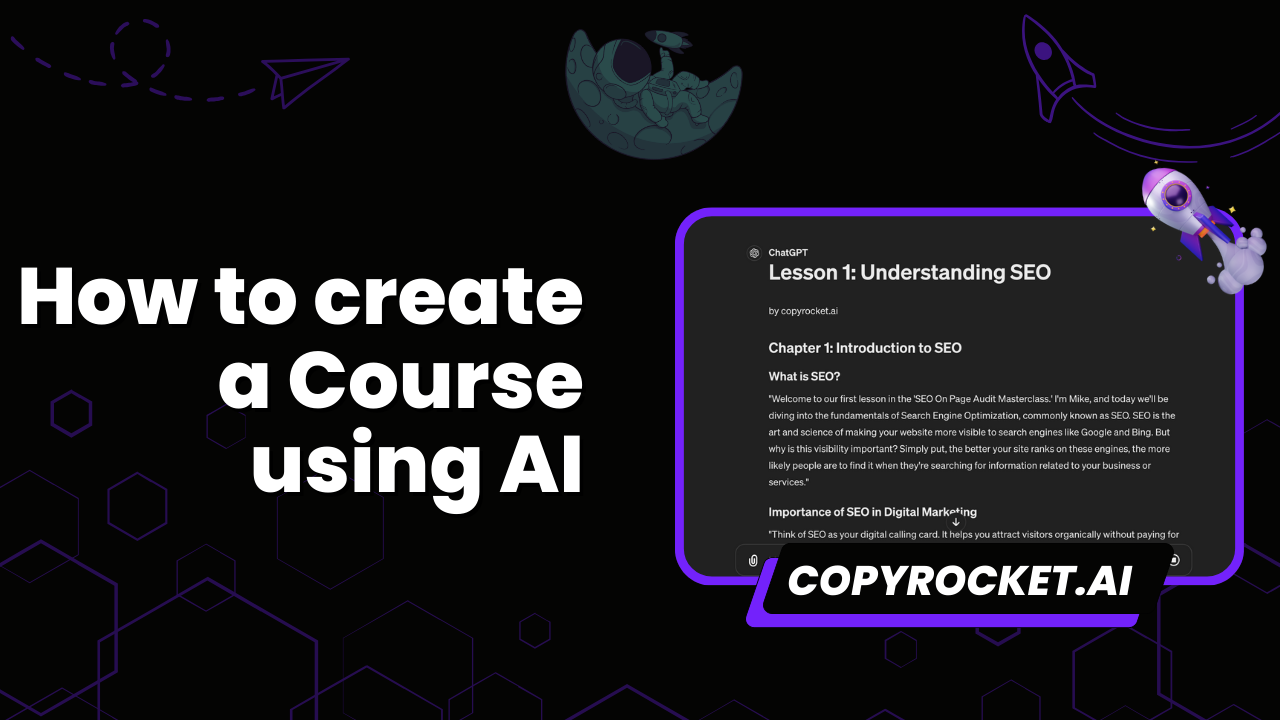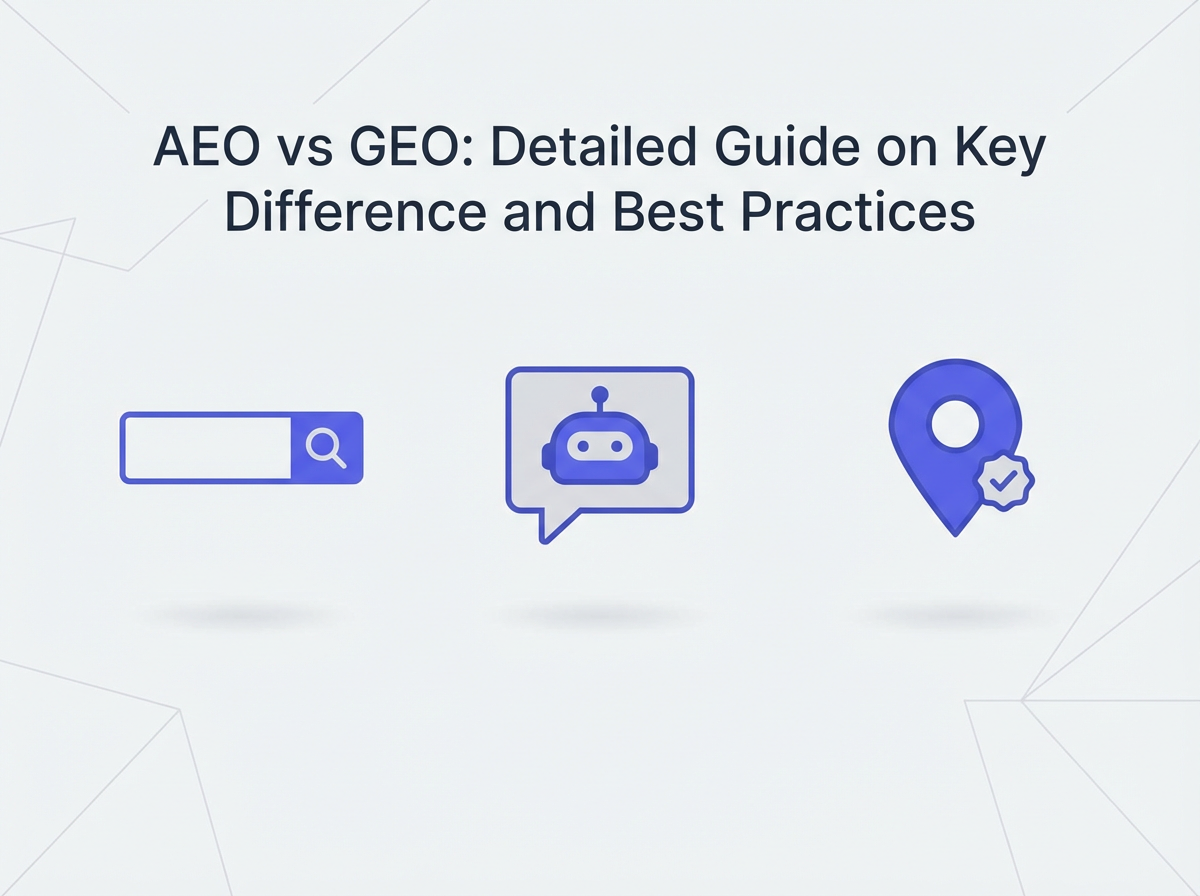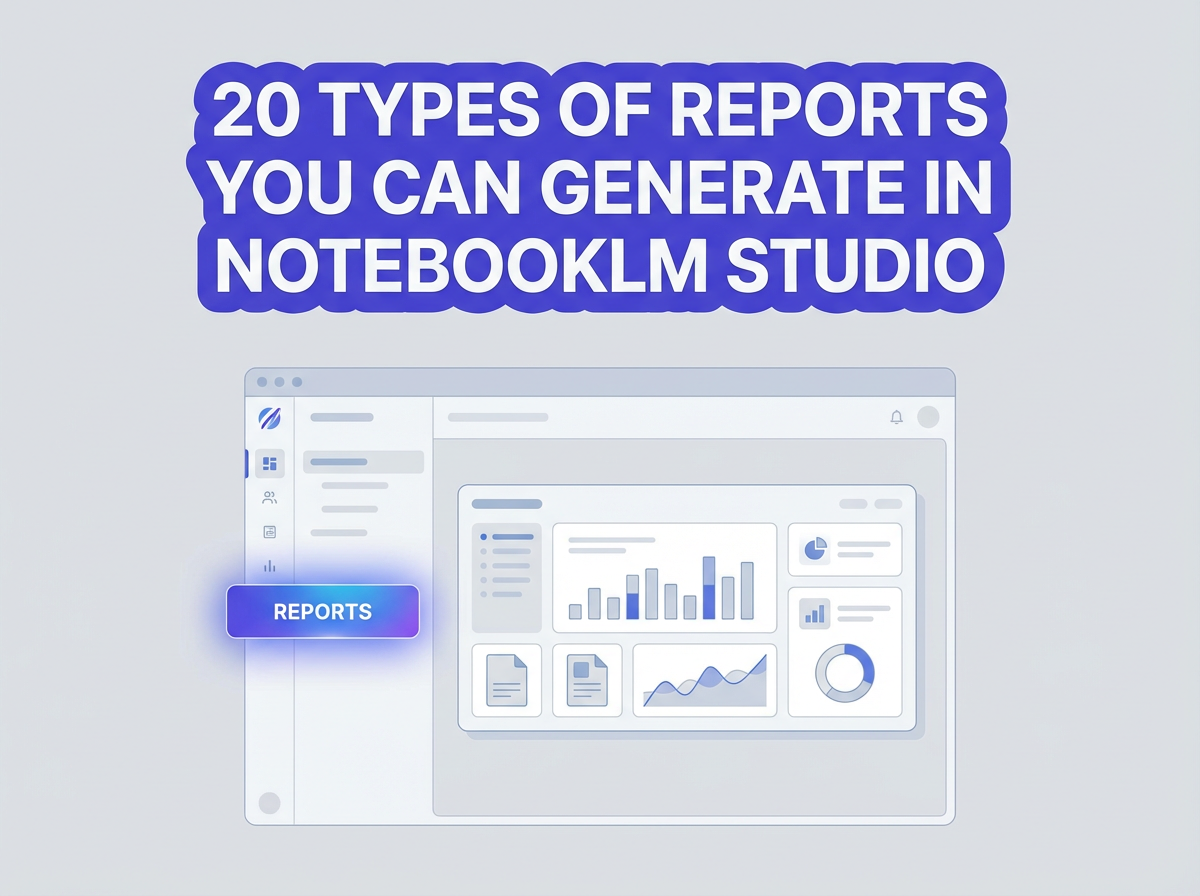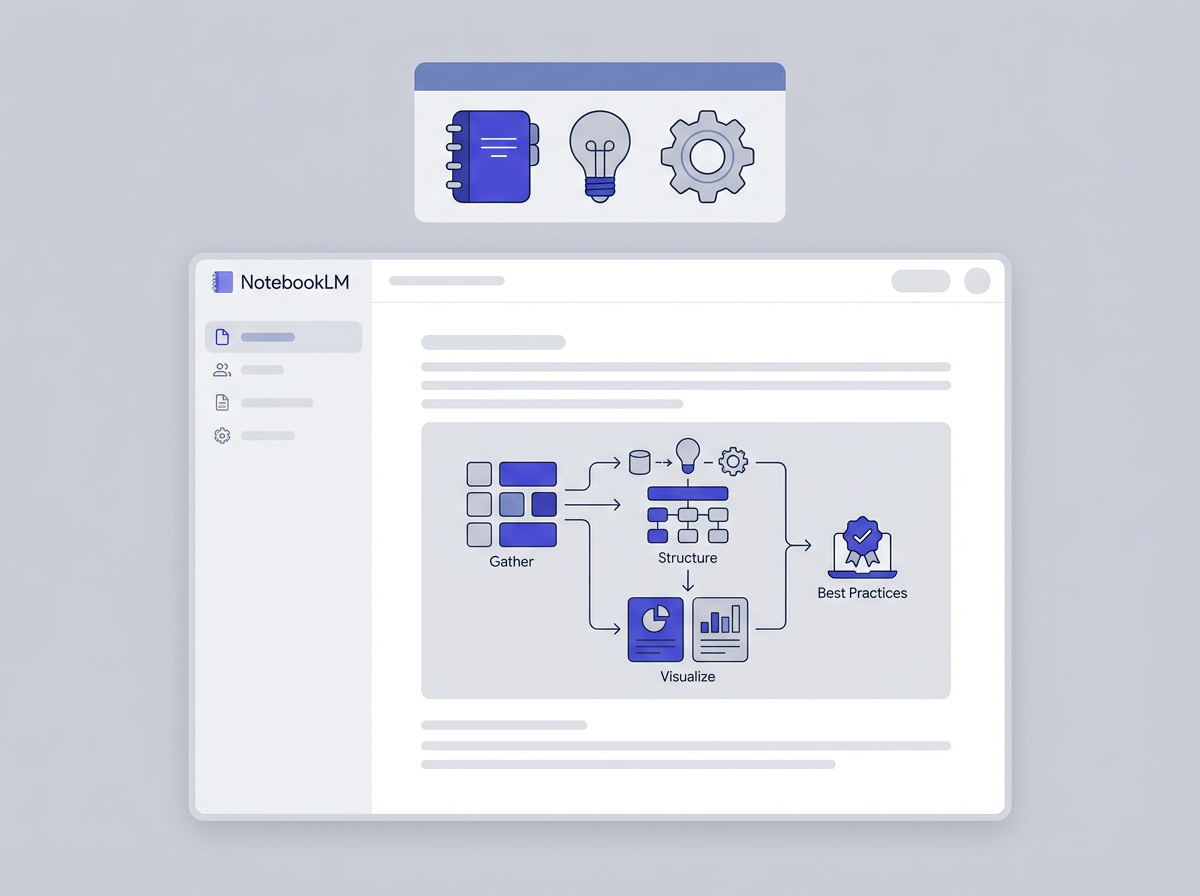Creating an online course can seem like a daunting task, but what if you could streamline the entire course creation process using AI?
This is where CopyRocket AI and a plethora of other AI tools come into play, transforming how we approach online course creation.
In this guide, we’ll walk you through how to create a course using AI, from developing the initial course outline to generating engaging course content.
By leveraging machine learning, AI algorithms, and AI technology, we can create more impactful educational content that caters to a diverse range of learning experiences.
Whether you’re an educator keen on exploring the fundamentals of artificial intelligence in course development or a course creator eager to utilize generative AI for crafting comprehensive course material, this guide promises to equip you with the best practices in AI course creation.
Together, we’ll explore various AI applications, including AI course creators and AI writing assistants, to produce a course that not only meets educational standards but also matches the learners’ needs for a dynamic learning management system.
With the integration of neural networks and deep learning, your course will not just be a collection of information, but a structured learning experience enriched with AI-generated content, from the course description to the full course library.
Join us as we unveil the potential of AI in revolutionizing the world of online courses, making the task of a course creator not just easier but also more efficient and effective.
Checkout our Free AI Tool;
What features You need to Create Courses With AI?
Natural Language Processing (NLP) and Generation (NLG)
To begin, familiarize yourself with NLP and NLG; foundational AI features that enhance course creation. NLP allows your AI tool to understand and analyze human language, while NLG enables it to generate coherent, natural language responses.
Utilize tools like ChatGPT or Copyrocket AI to create dynamic course outlines or lecture summaries. Simply input your course idea or description, and these AI assistants can help generate substantial course content, suggest topics, and recommend engaging activities or assessments tailored to your learning objectives.
Text-to-Speech (TTS)
Next, explore TTS technology to convert text into lifelike speech. Tools like Speechify or Descript bring your written content to auditory life, making your course accessible to auditory learners and those with reading difficulties.
This feature bolsters the inclusivity of your online course, ensuring all learners can engage with the material in a format that suits them best.
Consider using our TTS to create supplemental audio content or full podcasts, enriching the learning experience and catering to the growing trend of audio learning.
Text-to-Video (TTV)
Then, leverage TTV to transform written scripts into informative and engaging videos. With the assistance of AI, you can produce videos featuring avatars and animations directly from text prompts. Incorporating videos diversifies your course material, capturing the attention of visual learners and making complex subjects more understandable through multimedia presentation.
Automated Language Translation
Furthermore, incorporate automated language translation to make your course truly global. Tools like Google Translate and DeepL can help break down language barriers, offering multilingual support for your course content. By providing translations, you make your course accessible to a broader audience, fostering an inclusive learning environment for students around the world.
Utilizing AI Wisely in Course Creation
Employing these AI features wisely can significantly streamline the online course creation process. Each technology—NLP, NLG, TTS, TTV, and automated translation—plays a critical role in making your content more engaging, accessible, and diverse.
By integrating these tools, you transform the traditional course creation model into a dynamic, inclusive, and efficient process that benefits both the course creator and the learners.
Remember, the goal is not merely to use AI for the sake of innovation but to enhance the learning experience, making educational content more relevant, interactive, and accessible. Whether you’re designing a mini course or developing comprehensive course material for a more extensive learning management system, these AI features can help you deliver high-quality, impactful educational content.
How to Create a Course Using AI
Following are Some steps to apply to create stunning Course using different Methods;
Method #1 Copyrocket AI
Generate Course Outline
Navigate to app.copyrocket.ai and sign up for a free account to receive free credits.
From your dashboard, select “AI editor” from the sidebar.
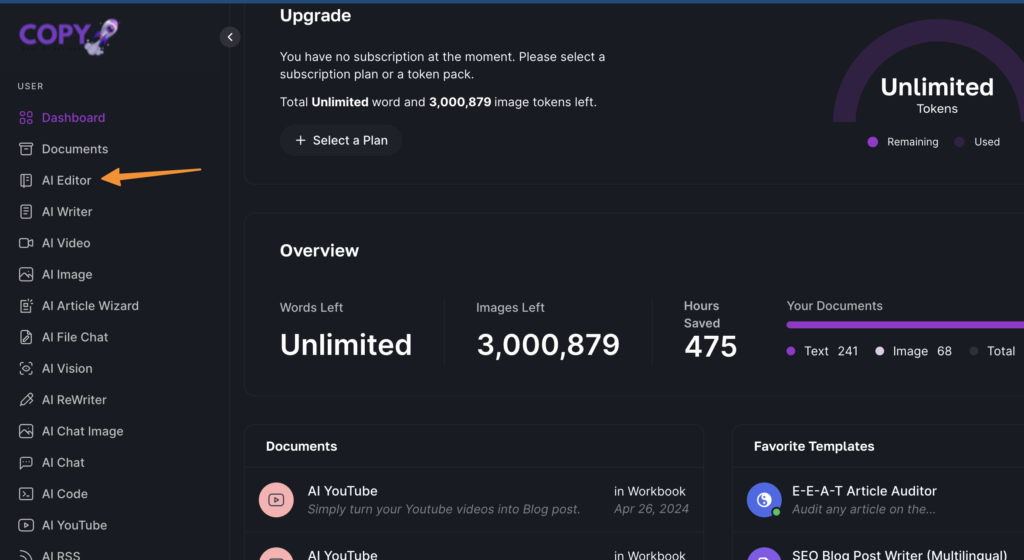
Search for the term “course” and click on the “Course Outline Generator” template.
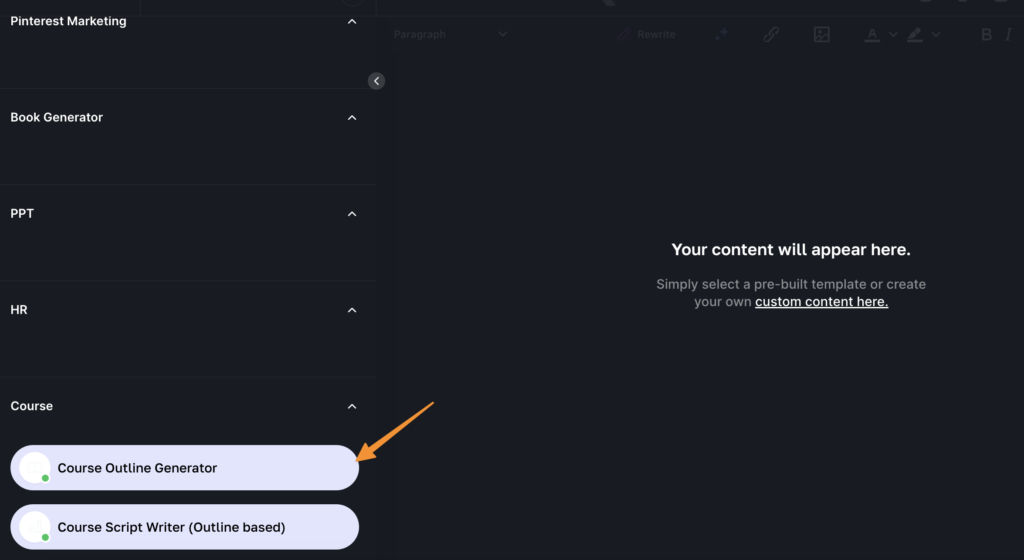
You will need to input two things: the name of your course and the number of modules you want in your course. You can choose up to 10 modules. Keep in mind, a module is meant to cover a significant subject area, not just a single lesson.
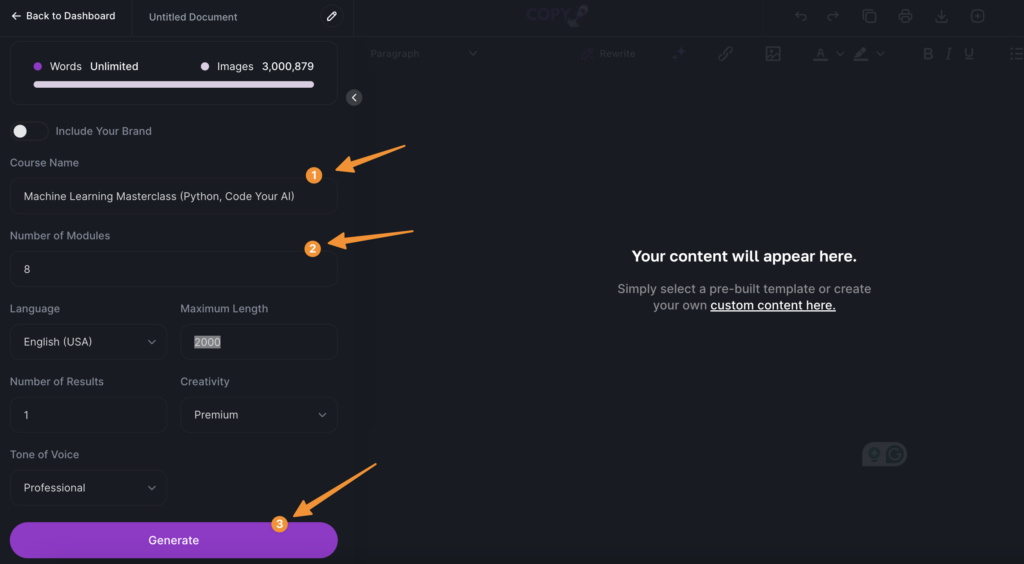
Click “Generate,” and your course outline will appear in the right sidebar.
Next, Change the formatting i.e. copy the text and go to markdown text converter here, paste the text;
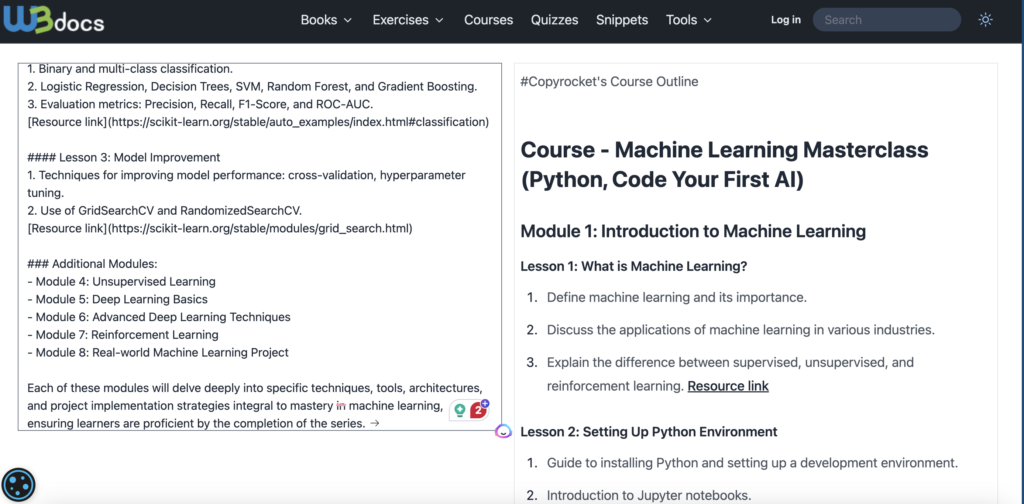
Now copy the markdown text and replace text into editor;
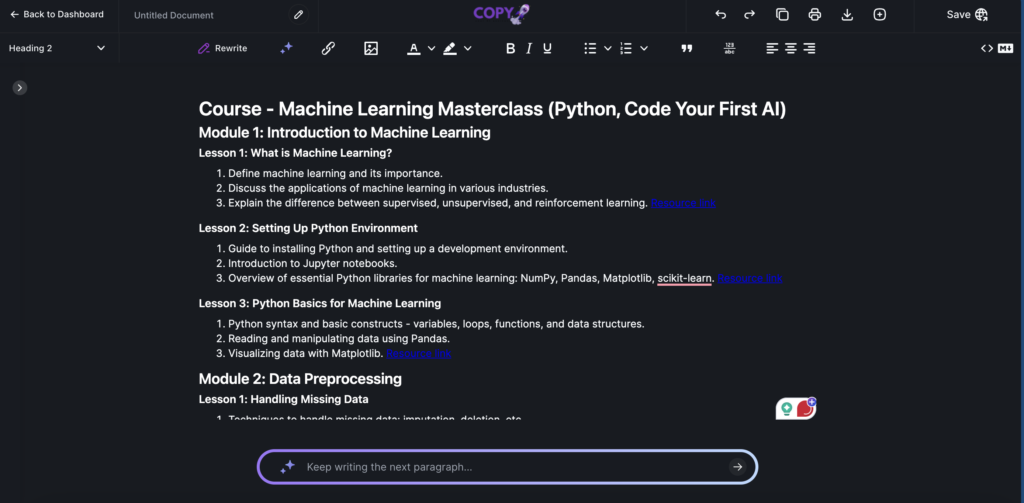
You will also receive resource links to samples, providing a guideline for how your content should look.
Generate Script for Each Lesson
Now, open dashboard in new window, go to AI writer and select the “Course Script Writer.”
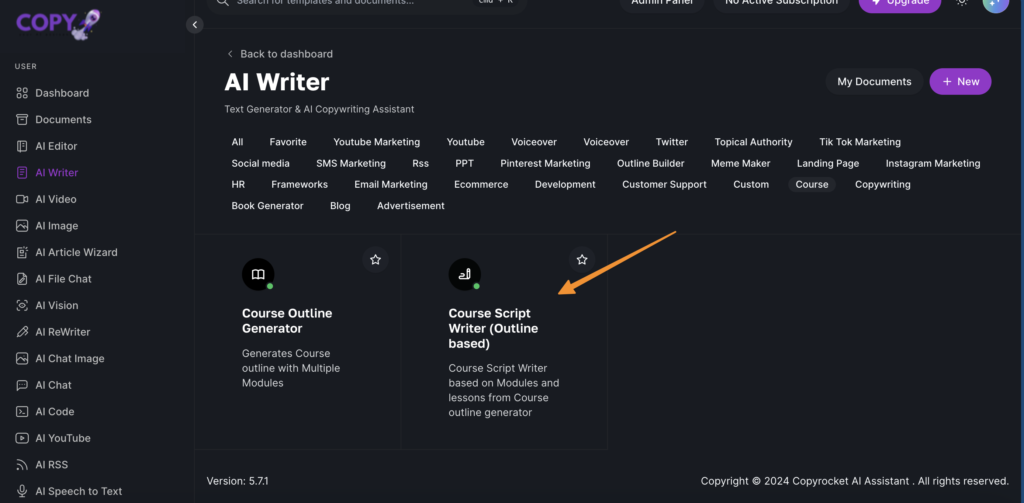
Fill in the required details such as course name, lesson name, and the module name you generated previously.
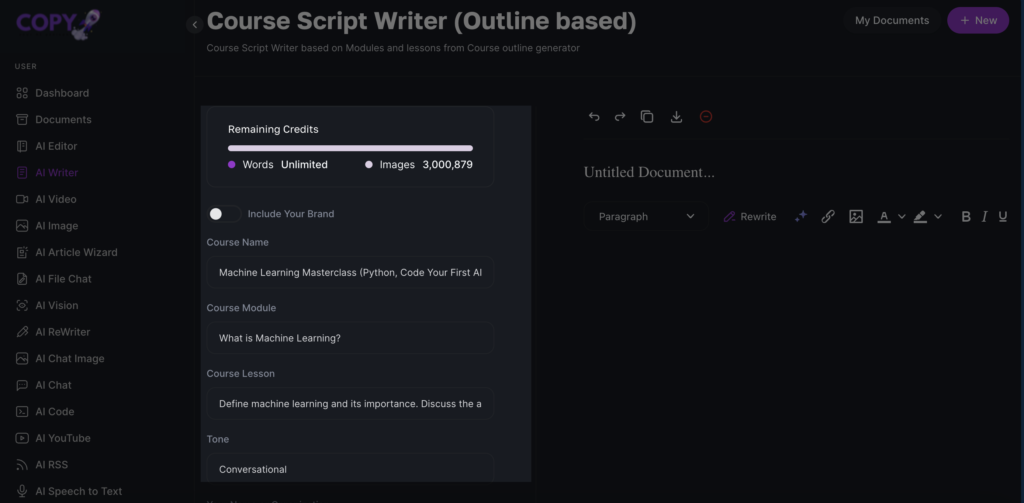
Click “Generate” and the script for the specified lesson will be created.

Do the steps of markdown converter again to convert the document to markdown text.
Repeat the process until you have a script for each lesson.
Generate TTS (Text-to-Speech)
Open a new tab and go to app.copyrocket.ai.
Select “AI Voiceovers” from the left sidebar.

Use the script you have just generated to create your voiceovers.
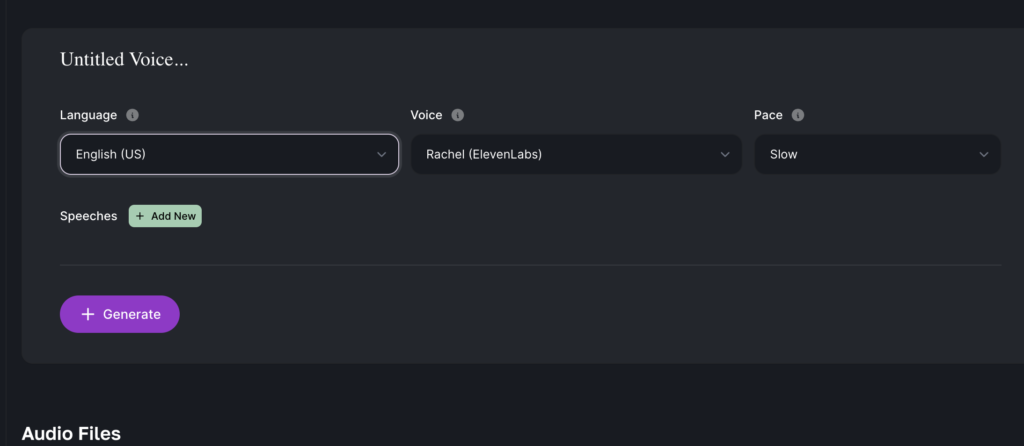
Build Visuals if Required
It’s now time to create visuals for your course.
- Open capcut.com or any other video editor like Clipchamp.
- Upload your audio files there and begin creating your visuals using the available templates.
By following these steps, course creators can harness the power of AI tools like Copyrocket AI to streamline the online course creation process.
This approach allows for the development of comprehensive educational content that catifies various learning experiences through generative AI, AI algorithms, and deep learning technologies.
Throughout this process, utilizing AI not only makes course development more efficient but also enriches the learning experience with AI-generated content, thus enhancing the overall quality and accessibility of the course material for learners worldwide.
Method #2 ChatGPT, Gemini, Claude, Perplexity
Generate Course Outline
Access Copyrocket AI’s extensive database of over 10,000 prompts designed for CHATGPT, gemini, Claude, perplexity, and more here to find the perfect course outline generator prompt.
Sign up or log in to receive a Notion URL that contains all necessary prompts.
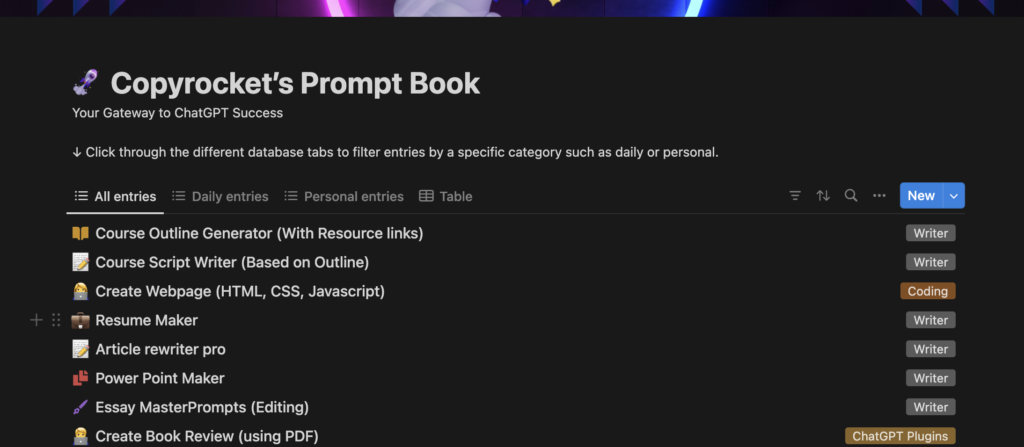
Open CHATGPT , Gemini or any ChatBOT you like and log in to your free account.
Copy the course outline generator prompt from Copyrocket AI and paste it into CHATGPT.
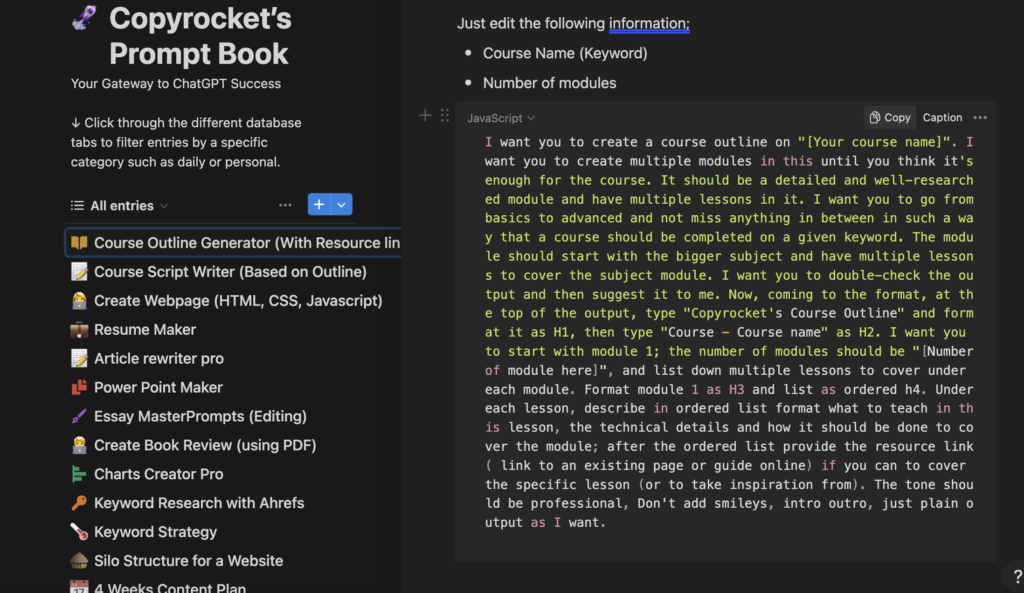
Edit the details within the prompt, such as the course name and the number of modules you wish to include in your course.
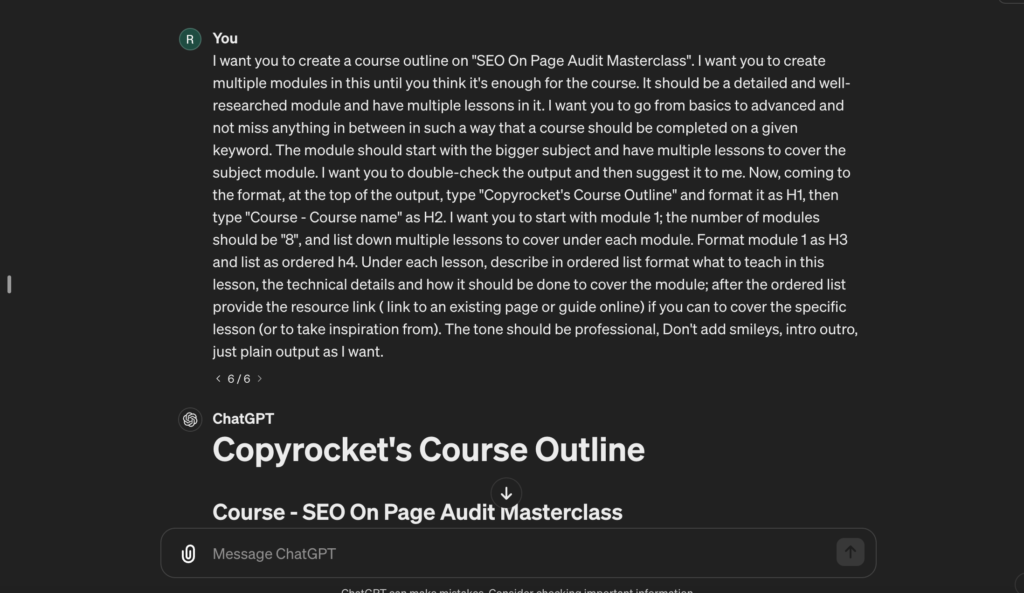
Generate Script for Each Lesson
Use the “Course Script Generator” prompt found on Copyrocket AI and paste it into CHATGPT.
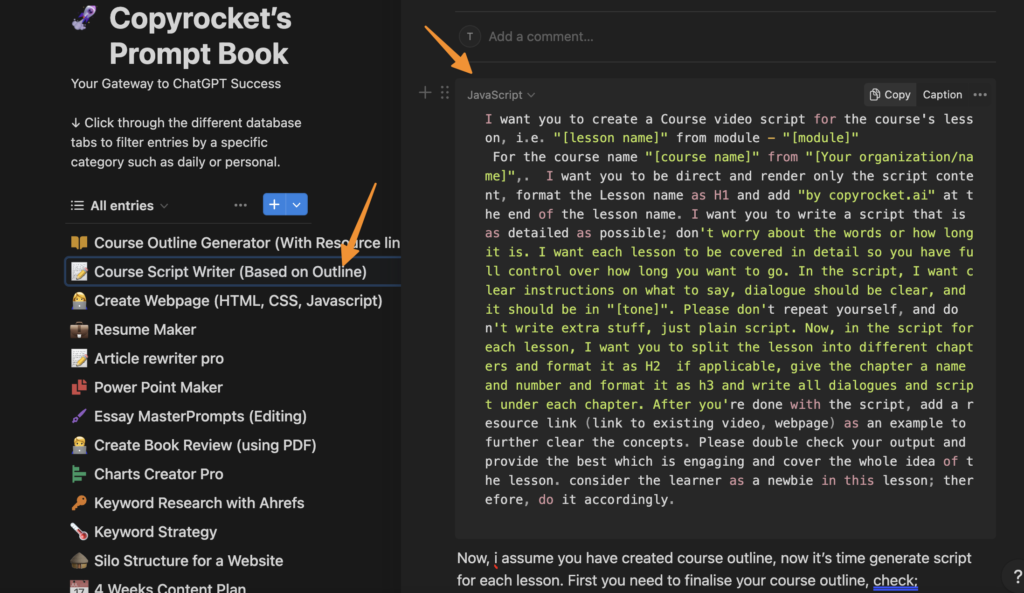
Modify the details as required, including the course name, lesson name, module name, and the tone of the script.
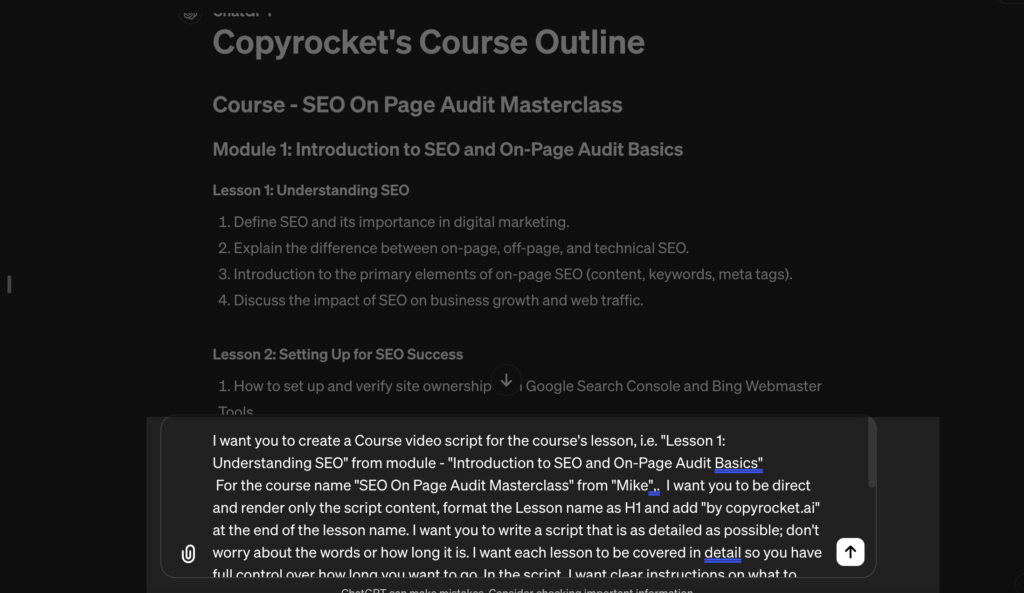
Press enter when you’re done to generate your script.
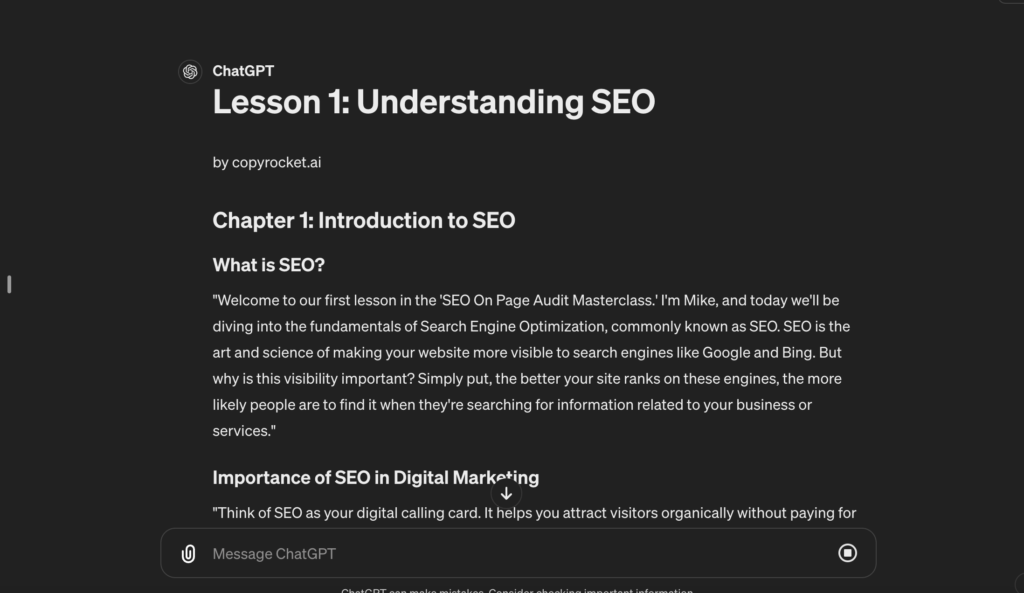
Now for next lesson, just type “continue with next lesson” until the last lesson;

Repeat this process for each lesson to ensure comprehensive course content creation.
Generate TTS (Text-to-Speech)
- Open a new tab and visit app.copyrocket.ai.
- Navigate to “AI Voiceovers” from the sidebar menu.
- Utilize the script you’ve generated to create voiceovers that make your course accessible and engaging.
Build Visuals if Required
- It’s now time to prepare visuals for your course.
- Visit capcut.com or choose any preferred video editor like Clipchamp.
- Upload your audio files and enrich your course with visuals using the editor’s templates.
This method taps into modern AI technologies such as machine learning, generative AI, AI tools, and deep learning to streamline online course creation.
By leveraging these AI foundations and algorithms, educators can efficiently produce educational content that is not only rich in information but also engaging and accessible to a global audience.
Adopting AI in the course creation process enhances the learning experience, making it more flexible for learners while supporting the educators in developing comprehensive course materials.
This seamlessly blends content creation with AI strategies, ensuring a well-rounded educational offering.
Method #3 Using Online AI Course Generators
You can also leverage online AI course generators, here are some list you can test and try before you buy;
- Coursebox.ai
- minicoursegenerator.com
- Sanalabs
- Mindsmith
Checkout these Generators and try, how you want to create a course.
What makes a Course Great? (What you Should do or don’t with AI)
What Makes a Course Great?
A truly exceptional online course not only imparts knowledge but also engages, inspires, and adapts to the learning styles of its audience. When leveraging AI in course creation, it’s essential to focus on both the substance and the delivery of your content. Here are some dos and don’ts to consider:
Dos:
- Integrate AI Tools and Technology: Utilize AI algorithms and AI technology such as generative AI and deep learning to enhance the course content with AI-generated content, making it more comprehensive and tailored to diverse learning needs.
- Focus on High-Quality Course Material: Ensure the course content is not only informative but also actionable. AI course creators can help curate and generate enriched educational content that is both current and relevant.
- Optimize for a Varied Learning Experience: Use AI to analyze and adapt to individual learning preferences, creating a personalized learning experience with content that caters to visual, auditory, and kinesthetic learners.
- Incorporate Practical Examples and AI Applications: Include real-world applications of AI foundations, such as machine learning and neural networks, to demonstrate the practical use of course topics.
- Ensure Accessible Learning: Leverage AI tools to make course material accessible to a wider audience. This includes using text-to-speech for audio learners and AI-assisted subtitles for those who are hearing impaired.
Don’ts:
- Overcomplicate with Jargon: While discussing AI course creation, machine learning, or neural networks, keep the language simple to ensure it’s understandable to all learners, regardless of their background in computer science or AI fundamentals.
- Neglect the Course Description and Learning Objectives: A clear course description and well-defined learning objectives are pivotal. They guide learners on what to expect and what they will gain, elevating the overall learning experience.
- Forget to Update and Revise Content: AI and technology evolve rapidly. Regularly review and update your course content to reflect the latest developments in AI technology, course creation processes, and educational content best practices.
- Underestimate the Importance of Interaction: Engage learners with interactive elements within the course. AI can help create dynamic quizzes, simulations, and other interactive content that reinforces learning objectives.
- Ignore Feedback: Use AI to gather and analyze feedback from learners. This can help continuously improve the course material, teaching methods, and overall effectiveness of the learning management system.
Incorporating these elements, guided by an AI strategy and leveraging tools like AI course creators and AI writing assistants, can significantly improve the effectiveness of online course content.
This approach not only enhances the learning experience but also ensures that educators and creators can produce highly engaging, informative, and up-to-date educational content.
Frequently Asked Questions
Can AI replace human educators?
No, AI technology and tools can enhance the course creation process, but they cannot fully replace human educators’ role in teaching and interacting with students.
Are there any limitations to using AI in course creation?
As with any technology, there are limitations to what AI can do. It’s essential to regularly review and update course content to ensure it remains accurate, relevant, and engaging.
Is AI only beneficial for STEM courses?
No, AI can be leveraged in various subject areas and disciplines. From humanities to business management, AI tools and technology can enhance the course creation process for any subject or topic.
Conclusion
In conclusion, the integration of artificial intelligence into the course creation process has fundamentally transformed how educators design, develop, and deliver learning experiences.
By harnessing the capabilities of AI tools, AI course creators, and AI technology, it’s now simpler than ever to create a course using AI that is rich in educational content, highly engaging, and tailored to meet the diverse needs of learners.
With the assistance of generative AI, AI algorithms, and deep learning, course developers can craft content that is not only informative but also interactive and adaptive.
These advances ensure that online course content remains at the forefront of educational innovation, making learning more accessible, dynamic, and effective for everyone involved. Whether it’s through enhancing course materials with AI-generated content, utilizing AI strategies for course development, or tapping into AI applications for real-world insights, the potential of AI in education is unmatched.
Educators adopting AI in their course creation and delivery can expect a more streamlined process, enriched course library, and an overall improved learning experience that resonates with all types of learners.
As we move forward, the role of AI in educational content creation will continue to grow, paving the way for more advanced learning studios AI, AI training courses, and a comprehensive learning management system that benefits both educators and learners alike.


